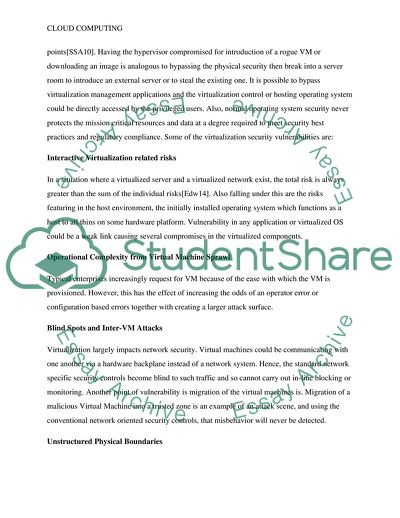Cite this document
(Cloud Computing Virtualisation Security Threats Literature review Example | Topics and Well Written Essays - 1500 words, n.d.)
Cloud Computing Virtualisation Security Threats Literature review Example | Topics and Well Written Essays - 1500 words. https://studentshare.org/information-technology/1806057-cloud-computing-virtualisation-security-threats
Cloud Computing Virtualisation Security Threats Literature review Example | Topics and Well Written Essays - 1500 words. https://studentshare.org/information-technology/1806057-cloud-computing-virtualisation-security-threats
(Cloud Computing Virtualisation Security Threats Literature Review Example | Topics and Well Written Essays - 1500 Words)
Cloud Computing Virtualisation Security Threats Literature Review Example | Topics and Well Written Essays - 1500 Words. https://studentshare.org/information-technology/1806057-cloud-computing-virtualisation-security-threats.
Cloud Computing Virtualisation Security Threats Literature Review Example | Topics and Well Written Essays - 1500 Words. https://studentshare.org/information-technology/1806057-cloud-computing-virtualisation-security-threats.
“Cloud Computing Virtualisation Security Threats Literature Review Example | Topics and Well Written Essays - 1500 Words”. https://studentshare.org/information-technology/1806057-cloud-computing-virtualisation-security-threats.


